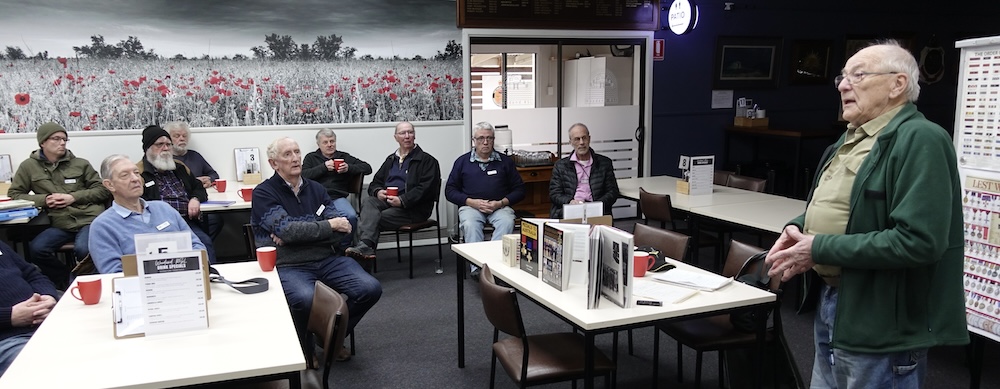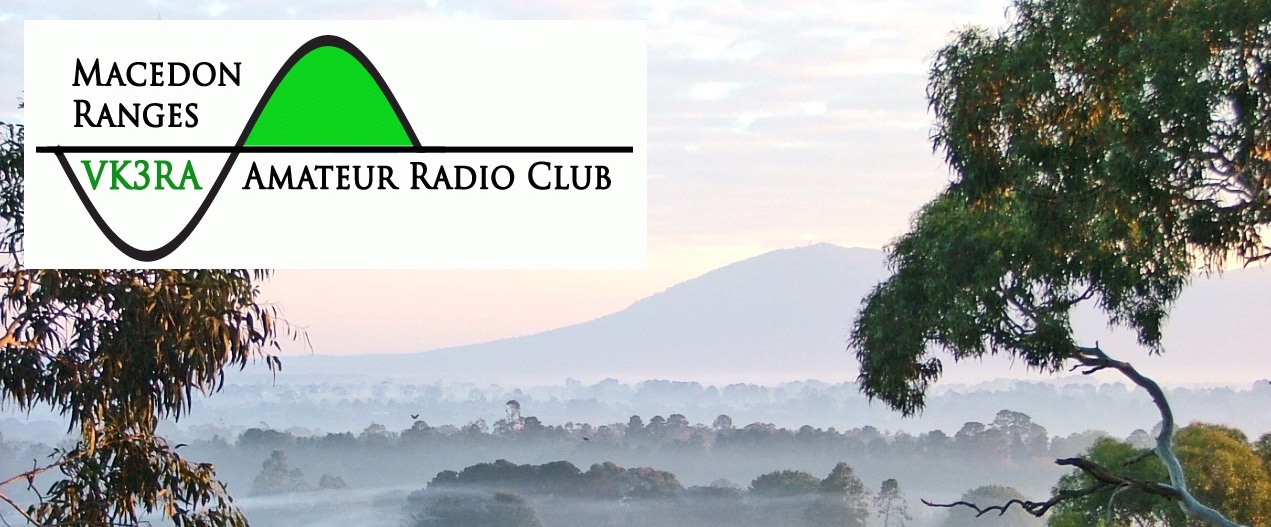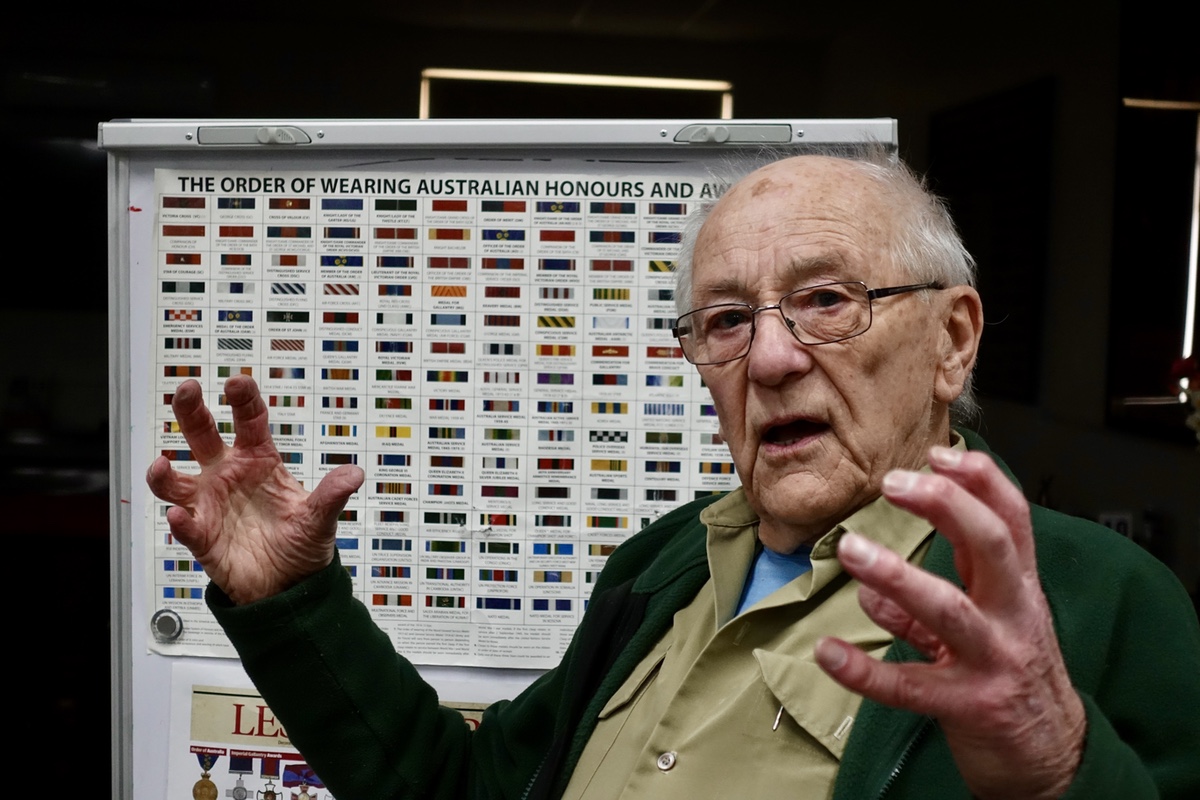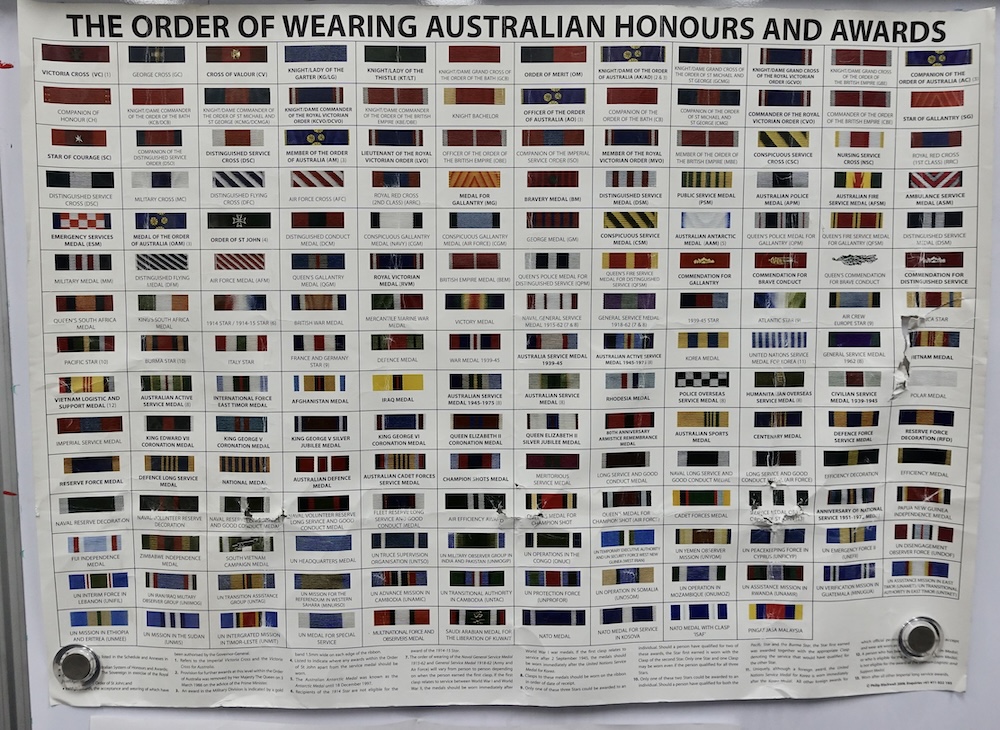At today’s meeting, Graeme VK3CDO, gave a fascinating talk about military medals and ribbons.
Graeme, VK3CDO, first got interested in the subject of medals and ribbons when he was fairly young and served in the Air Training Corps in the Air Force. When he did his NCOs course he had to do organisations, administrations, drill and many other subjects. Part of this was about rank and the badges that go with it. Also medals were covered.
In talks to school kids, Graeme finds that they listen attentively and ask intelligent questions. One of the things he’s been trying to teach is how to wear medals handed down correctly on Anzac day. He cringes to see them worn upside down, at an angle or in the wrong order.
If you’re wearing your own medals, you wear them on the left hand side. There are four exceptions which are medals not awarded by the military that are worn on the right hand side. Foreign medals are worn on the right. Medals awarded by the French or Belgians are worn in the normal cluster as they were allied to the British forces.
The ribbon’s colours actually mean something – they’re not just a bunch of pretty colours. They have a meaning and they’re put there to tell a story. If you understand that story, you can put the medals into context.
You might see that one grandparent has a red, white and blue ribbon and the colours are fused together, that’s from the First World War.
A British war medal has orange, blue, white and dark blue on the ends. You sometimes see a little cluster of oak leaves, that’s called an MID. Mentioned In Dispatches.
Graeme ran through a range of different medals and explained what they meant. The group was most entertained when he described that the award of an OBE was said to stand for Other Buggers’ Efforts.
A large book on Victoria Crosses was on display and that was only to the end of World War I, so there’s a heck of a lot of them. The award was started by Queen Victoria and on the first presentation she gave out 111 of them in one day in Hyde Park.
The first one was to Charles Lucas, in 1914. There were some given out later that went back to the South Africa. If you look at the medals, the ribbon is the same, but there are two medals because Queen Victoria was the raining moniker at the time. Later when she died, King Edward came along so you’ll see two different faces on medals. One facing that way, one facing the other way. As with coins, each time the monarch changes they change which direction they face.
Only three people have won more than one Victoria Cross. Two were British and one was a New Zealander named Captain Charles Upton and he won them in World War II.
There is one woman who has a Victoria Cross, but it’s not an ordinary one, it’s a gold one. And it was specially minted for her, she was the nurse and she looked after the soldiers in the Indian Mutinies that had cholera and typhoid and nursed them through and her commanding officer of the day was a fellow boy named a Sir Samuel Brown.
When a person has a VC, and they walk past a commissioned officer, that officer salutes them first to show respect for the medal. You’ll even see sometimes when the VC is presented the medal, the officer will salute the recipient first. It’s held in very, very high esteem.

Our thanks to Graeme, VK3CDO, for a fascinating talk.


